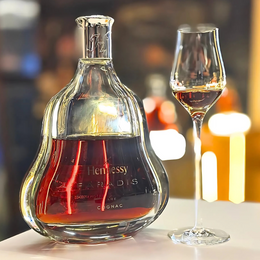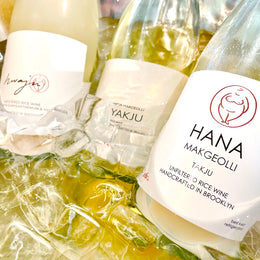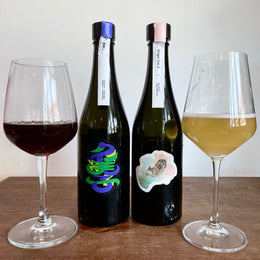
The other evening, I found myself in conversation with a bartender at a whisky bar who asked me what I’d recently been up to. I replied that I’ve been getting into artisanal mezcals and tequila because it seems like agave spirits – which seem to be popping up on cocktail menus everywhere from Singapore to Hong Kong – are the next big thing. The bartender rolled his eyes and put his hand by his mouth as if to whisper an industry secret: “People have been saying that for a decade.”
His cynical remark, though playfully delivered, gave me pause. Could it be that the agave boom was more hype than reality? But the figures in industry reports certainly support the agave boom narrative. Tequila and mezcal sales have remained resilient even as other spirits have faltered in the face of economic uncertainty. Agave spirits are driving the premium spirits market in many regions. By 2022, they have surpassed the all-important whisky in sales in America, and their growth trajectory suggests they would in all likelihood overtake vodka this year.
But there’s a deeper truth behind the bartender’s comment. There's often a disconnect between brand narratives and the consumer’s actual interest in the product. For every drink that experiences a genuine resurgence, there are countless others that are perpetually promised as "the next big thing." The repetitive nature of such claims can lead to a sense of jadedness among consumers and industry insiders alike. After years of hearing the same unfulfilled promises, one can't help but recall the tale of the boy who cried wolf.

(Source: Dartigalongue Armagnac)

The truth is, success in the spirits world isn’t an overnight phenomenon. It takes years of innovation and consumer education to transform a spirit from obscurity to ubiquity. The popularity of Scotch whisky and more recently agave spirits are the result years of time and effort by marketers and producers to understand and engage with the consumer. It’s a decade of labour, to be sure.
Against this backdrop, I'd like to turn our attention to a spirit that's been quietly waiting in the wings, ready to step into the limelight: Armagnac. This lesser-known cousin of Cognac, hailing from west of the sun-drenched region of Gascony in France, is a relatively nascent category in the global spirits scene. Yet, it boasts a couple of passionate backers who firmly believe in its untapped potential.

One of the torchbearers of Armagnac's renaissance is Dartigalongue. Established in 1838, it is one of the oldest Armagnac houses, and in fact the oldest surviving house of the major Bas-Armagnac region. The house has been a steadfast presence in the region for over 180 years, and remains within the hands of the founding family. At its helm today is Benoit Hillion, the Managing Director and representative of the sixth-generation owners. Hillion's surname gives us a hint that he wasn't born into the founding family. He married Virginie Dartigalongue in the early noughties and began working for the family. And with no one else willing to take the reins, the responsibility of safeguarding the legacy of Dartigalongue in the modern world fell upon him.

Benoit Hillion, the managing director of Dartigalongue, and 6th generation representative of the Armagnac House.
If you visit the distillery, you would find a proud collection of Dartigalongue’s legacy – a fantastic collection of vintage Bas-Armagnacs, religiously preserved in the family's cellars with vintages that date back as far as 1848. The cornerstone of their work is the meticulous selection of eaux-de-vie, all produced from three white grape varieties: Baco 22A, Ugni Blanc, and Folle Blanche. Once distilled, the spirit is nurtured in oak barrels sourced from the local Gascogne forest, where time and wood weave their magic.

The history of Dartigalongue is one riddled with challenges. It began in the early 1800s with Pascal Dartigalongue, a young man from a family of winegrowers in Saint-Lanne, southwestern France. In those days, Armagnac as we know it didn't exist; brandies were simply referred to as Eau-de-Vie. Although Pascal hailed from a prosperous family, the bulk of the family business was inherited by his elder siblings. He was given 10,000 gold francs as his share and, in his twenties, decided to strike it out on his own in Nogaro, about half a day's walk from his hometown of Saint-Lanne, to establish his own brandy business.
The early years were difficult, but Pascal quickly recognized the potential of the export market for Armagnac, likely due to the intense competition it faced domestically from wine makers and Cognac. His Armagnacs, sold in barrels, found their way to Belgium, the Netherlands, England, and even the distant shores of the USA.

The business thrived, and sales soared even higher in the 1870s with the expansion of railways across Europe. This reduced earlier reliance on the port in Bayonne, allowing Armagnac to reach more markets. Wagon trains laden with Dartigalongue's Armagnac journeyed to northern European capitals like Rotterdam, Antwerp, London, and Hamburg. By the early 1900s, thanks to a dedicated office in Paris, Dartigalongue's Armagnacs had become a staple in prestigious hotels, luxury cafes, and restaurants throughout the French capital.

But that’s not the full story though. Since the 1800s and up until this decade, Armagnac generally remained in the shadow of its more widely available and aggressively marketed cousin, Cognac. While both spirits share similarities, Armagnac production is significantly smaller due to its smaller appellation. The benefit for drinks enthusiasts is that Armagnac is much more a craft product. However, it also means that Armagnac lacks the accessibility and widespread availability of Cognac. As Hillion noted in an interview, Armagnac producers make about 3-4 million bottles a year, compared to over 200 million bottles for Cognac, making Armagnac production about 40 times smaller than Cognac - a stark difference in scale.
So in the 2010s, when it came time to pass the business down to the sixth generation, no one in the family was initially keen to take over. Virginie Dartigalongue and her husband, Hillion, were convinced by their aunt, the then-owner, to assume leadership of the house.
While Hillion embraces the tradition of his chosen House, he's not beholden to it. He understands that for Dartigalongue Armagnac to thrive in the modern world and compete with other spirits producers, they have to think of new strategies to appeal to new drinkers.

Armagnac, like other spirits, is clear when it comes out of the still. It's the barrel aging that imparts the colour and nuances of most Armagnac as we know it. However, for a business owner, aging is a slow process that ties up investment and requires market projections decades into the future. Hillion, while focusing on barrel-aged expressions that continue to define Armagnac, is keenly aware of his production limitations, especially when compared to Cognac.
But Armagnac producers have one advantage over Cognac producers: flexibility in aging regulations. All Cognac must be aged in oak barrels for a minimum of two years. Armagnac has similar rules, but they're more liberal – the aging requirement is waived for “Blanche Armagnacs” which are officially recognized as a separate AOC (Appellation d'Origine Contrôlée) in 2005. Distilled the same way as traditional Armagnac, Blanche Armagnac is not aged in oak barrels but stored in inert containers like stainless steel or glass. This allows for the creation of unaged Armagnac - a fresh, clear eau-de-vie bursting with fruit-forward flavours that has found a welcome place in cocktail bars.

Recognizing this trend, Dartigalongue launched the "Experience Series," featuring a Blanche Armagnac and two young aged Armagnacs, all designed to be enjoyed soon after production. With limited aged product availability, Dartigalongue is focusing on young Armagnac and cocktails, appealing to a diverse range of drinkers with a trio of bottles that can be enjoyed neat or in cocktails. Hillion wanted to prove that you don't have to wait 15 to 20 years to make a good Armagnac – this approach echoes a tradition from the mid-1900s, when one of Dartigalongue’s iconic owners pioneered several Armagnac-forward cocktail recipes, foreshadowing the modern cocktail movement.
We have with us a bottle of Dartigalongue’s Blanche Armagnac from the Experience Series. This was distilled according to traditional processes before being stored in stainless steel tanks for at least 3 months for the spirit to mellow, before the alcohol is gradually reduced to 43.2% ABV with soft water. And while this was designed for bartenders, this is perfectly appropriate for a neat tasting which I experienced at Syzygy Bar in Singapore.
Let’s give this a taste!
Dartigalongue Blanche Armagnac, 43.2% ABV – Review

Nose: The aroma is remarkably clean and pristine, the bouquet gentle and delicate. Leads with a subtle sweetness of poached pear and orange blossom mingling with a hint of overripe lychee funk, and a rich, verdant note of freshly cut grass.
Palate: Surprisingly viscous, it coats the tongue with an oily texture. An initial burst of bright lychee, mangosteen, and langsat before evolving toward the familiar sweetness of ripe papaya. There’s a touch of cream sweetness, and along with the fresh fruits this reminds me of a fruit pavlova. Touch of subtle almond crumble.
Finish: Clean, short, and dry, leaving a lingering warmth of pepper and spice at the back of the palate.

My Thoughts:
This is a straightforward unaged spirit, though it appears to be nicely layered and rounded. Its oily texture is notable, and it also showcases more fruitiness and nuance, setting it apart from typical vodkas. It's also more approachable and rounded than gin, focusing on fruitiness and cream rather than the assertive juniper and pine notes. While it's a versatile cocktail ingredient, its fairly enjoyable to sip on ice or just with simple tonic. This would be delightful in refreshing fruit-forward cocktails like a Paloma or a Daiquiri.

Whether Armagnac will become the "next big thing" remains to be seen, but Dartigalongue's unaged "Experience Series" is undoubtedly a step in the right direction and its warm reception by bartenders signals a growing appreciation for Armagnac's versatility and flavour profile. However, until Armagnac production can scale up to rival other major spirits categories, it may struggle to fully emerge from their shadows. Perhaps more unconventional strategies to speak to a younger crowd, including this innovative focus on unaged expressions, will be key to increasing Armagnac's availability and appeal.
My Rating: 6.5/10
|
Score/Rating Scale :
|

@CharsiuCharlie







